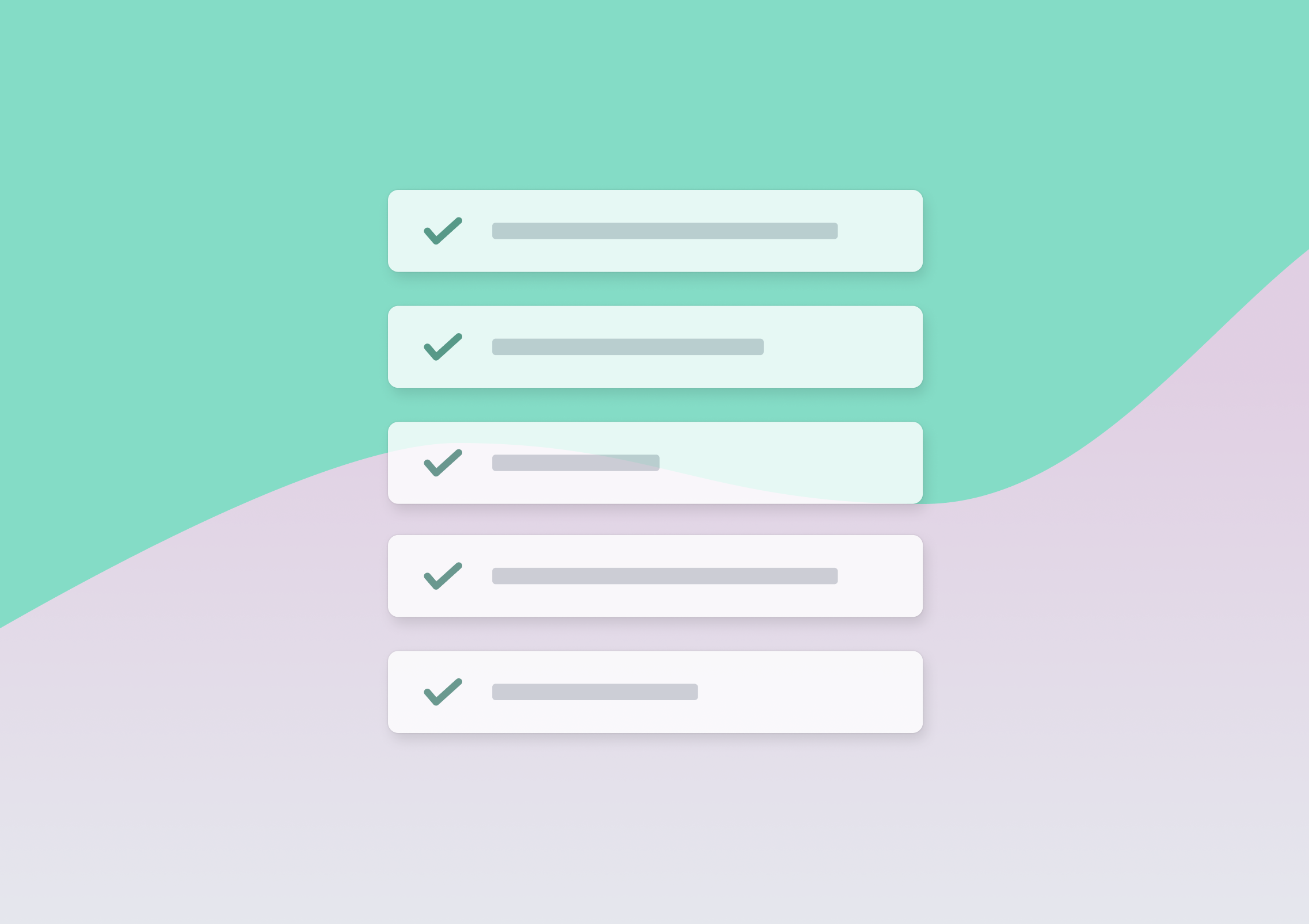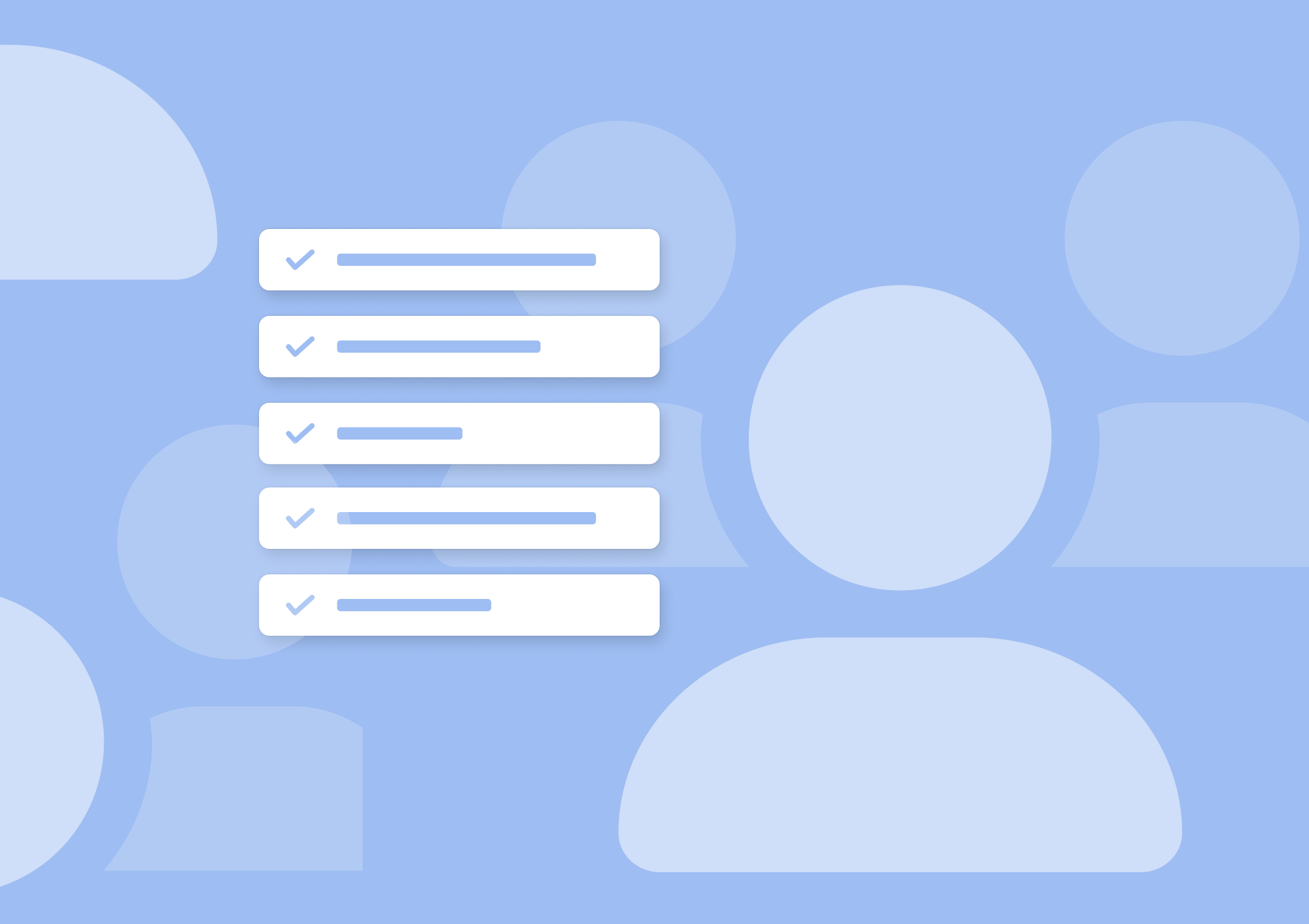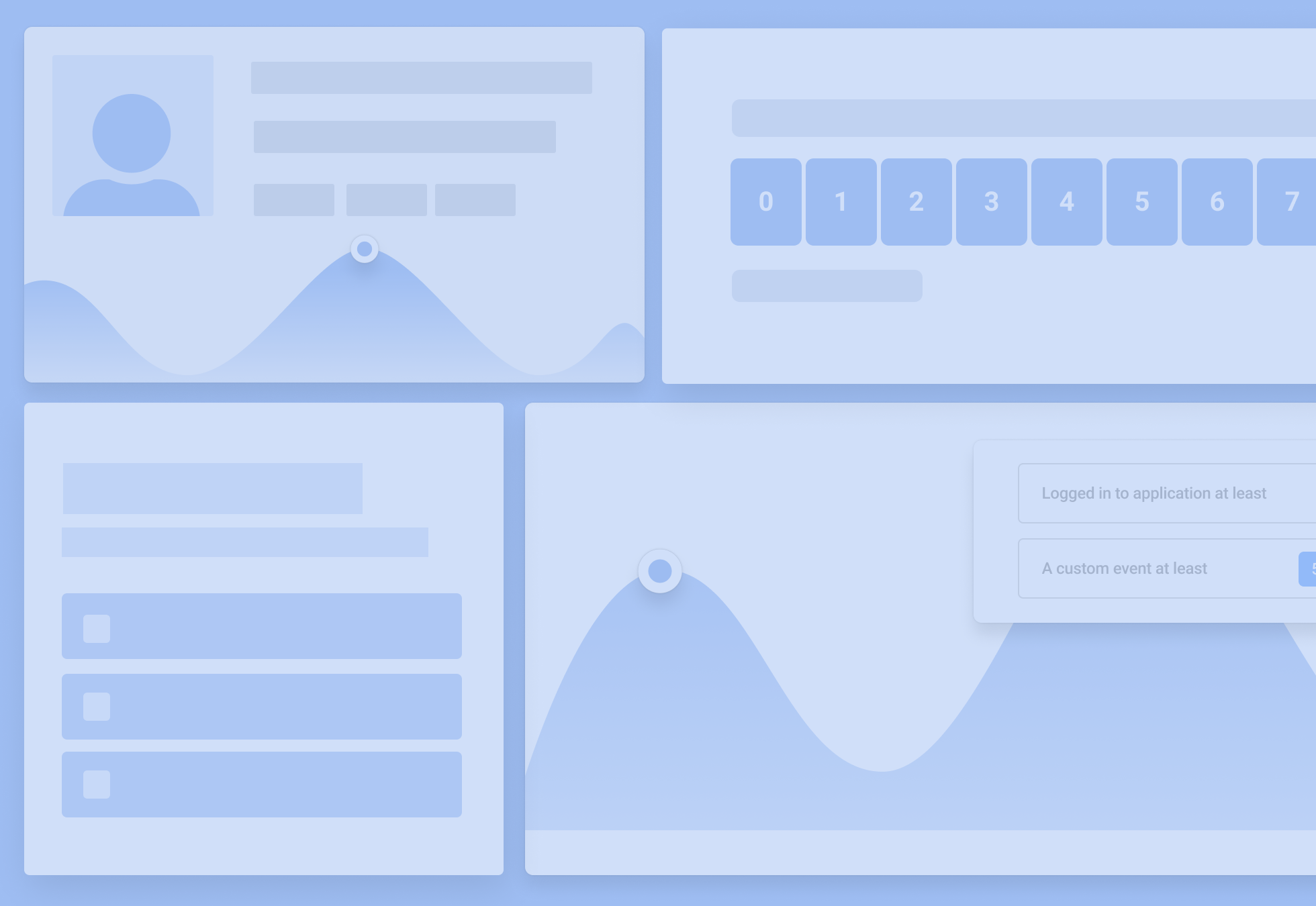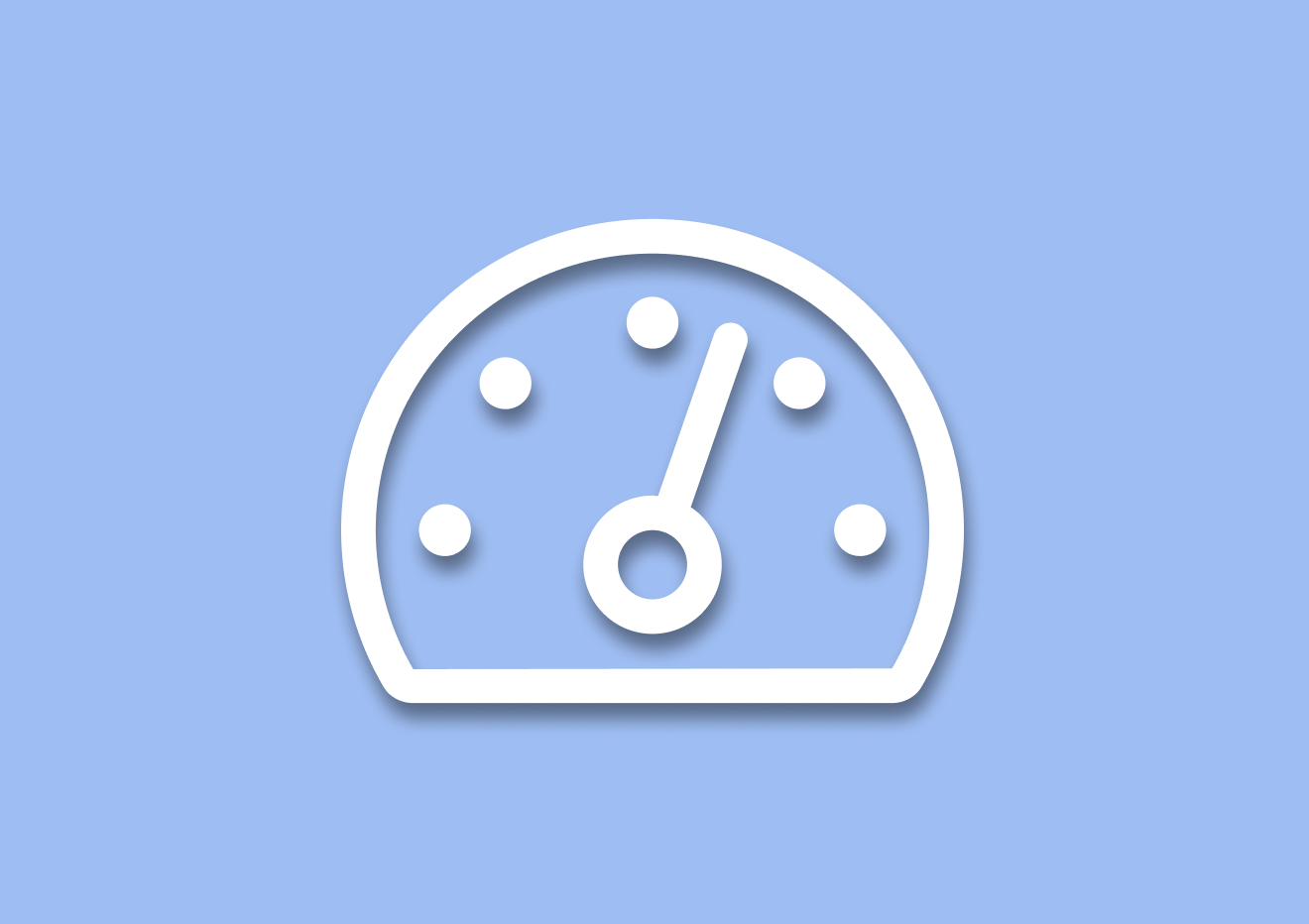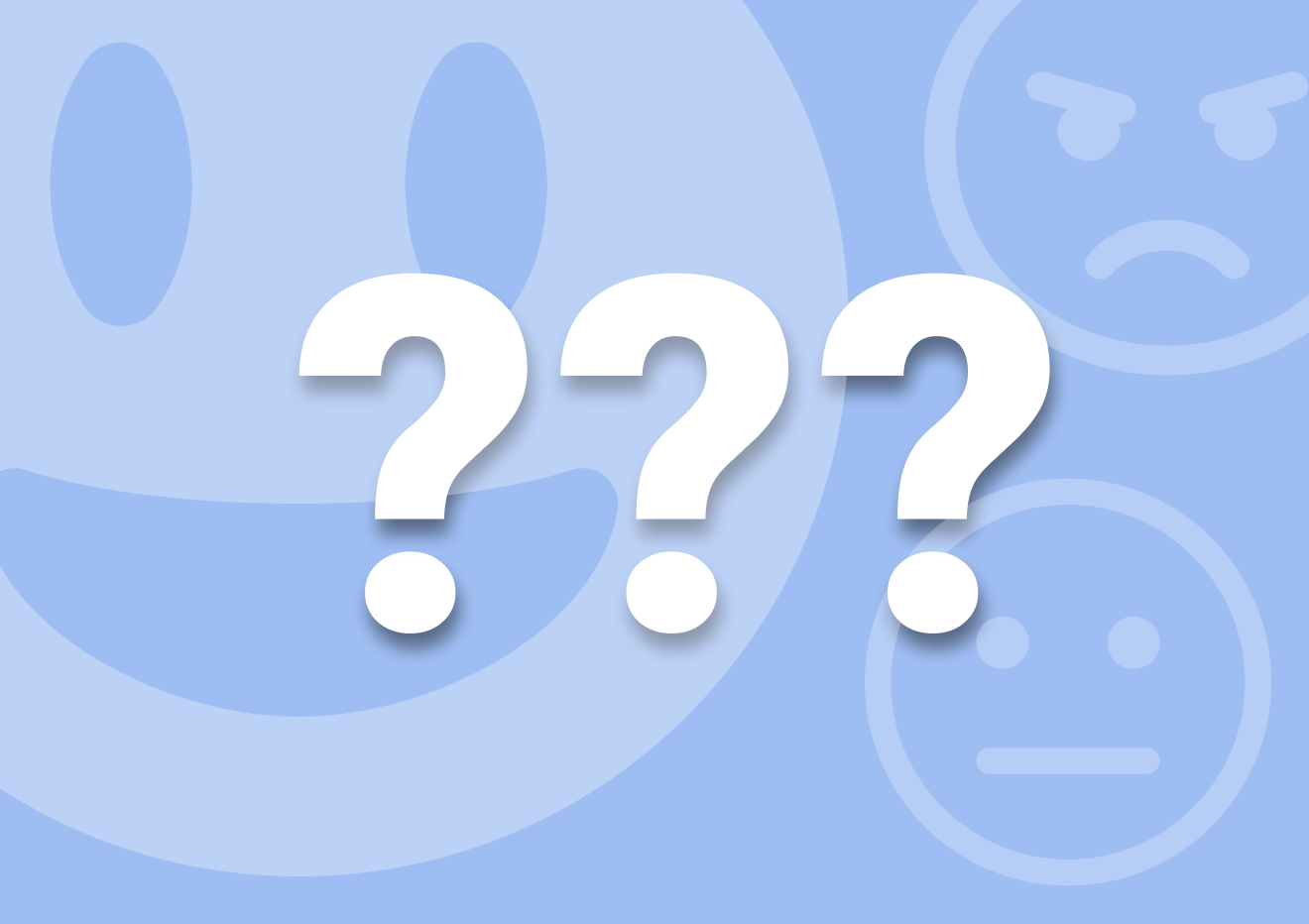What is the Customer Engagement Score?
No other metric works as well as the customer engagement score when it comes to predicting churn or identifying new upselling opportunities.
In fact, measuring the engagement score is by far the best way to:
- Identify the most engaged trial accounts that you could convert into paying customers (and when they’re ready to talk to you about it.)
- Which trial or freemium users might not be engaging with the product enough to see its value, and?
- Which existing customers are ready to move on to a higher package?
But how do you do it, exactly? How do you create an engagement score for your brand?
That’s what you’ll find out from this guide. You’ll learn:
- What is customer engagement?
- Understand the concept of the customer engagement score and why should you care about it.
- We’ll discuss who should measure customer engagement and how it affects different positions within the company.
- Finally, we’ll talk about the process of measuring user engagement.
What is Customer Engagement?
In the simplest terms, an engaged user or customer is someone who receives value from using your product regularly.
But although the definition might seem simplistic, it hides two critical insights about users:
#1. “The value”
Seeing the value basically means that the person has received the outcome they had hoped for when signing up for your app.
The value is closely tied to your marketing messages. For CRM software, for example, that promises to simplify the sales process the value will come as a result of users moving more deals forward through an organized sales process.
A productivity app promising to improve internal company’s processes will deliver its value when users begin to complete more projects on time, and with little chaos in the process.
The good news is that you can quantify the value and use it as one of the bases to measure the engagement score.
(Note: Later in this guide, I’ll show you how to do it. I’ll also show you how other companies have been quantifying the value of using their products already.)
For now, however, let’s focus on the other aspect of the definition you must know about:
#2. “Regularly”
For a user to engage with a product, they must see the value from using it repeatedly. Making one sale through the CRM only will not likely confirm the value. Similarly, completing one project out of many on time might have just been a fluke, rather than a result of using the product.
Based on the above, we could expand the definition further, and describe an engaged user as:
Someone who received the results they were hoping for originally, when signing up for your product, based on what you’ve promised, and received them repeatedly.
What is a Customer Engagement Score, Then?
You know the definition of an engaged user already. But what does that have to do with the customer engagement score?
The customer engagement score is a metric that sits at the heart of your Customer Engagement Strategy. You can use it to measure how engaged your existing customers and trial or freemium accounts are.
Typically, you calculate the engagement score based on product activity and product usage. Although, it’s worth to note that your methodology for creating the score and monitoring it will, most likely, be unique to your business (more on this in just a second.)
I’ve already explained what the customer engagement score can help you achieve but let’s recap it quickly:
- Identify trial accounts that are ready to convert into paying customers,
- Uncover leads who promise the biggest sales opportunity for your inside sales team,
- Detect existing customers whom you could upsell to a higher package, and
- Find out which customers are struggling with using your product and might churn as a result.
But Why Should You Care About It All?
The answer is quite simple.
Your business’ success relies on having people use the product and engage with it.
Here’s why:
- Disengaged users churn, and you lose the revenue they used to bring.
- Customers who struggle with identifying the value will sooner or later churn too.
- Disengaged trial users never convert. You only end up spending money supporting their trial but see nothing in return for it.
Engaged customers, on the other hand, keep on using the product and paying for it happily.
Not to mention that, as their usage levels grow, they might move up to a higher package, increasing your revenue without you having to proactively win more accounts.
But Who Should Care About the Customer Engagement Score in Your Business, Specifically?
Pretty much everyone.
For the founder or the CEO, the score will reveal how much the product meets the customer expectations or demand.
The product team can use it to determine whether customers engage with new additions to the product.
Sales and customer success teams can use the metric to prioritize accounts to process, and reduce the time wasted on dud leads.
Pretty incredible, right?
So, with all that out of the way, let’s discuss how to calculate the score.
How to Measure Customer Engagement Score
Below you’ll find the exact 4-step process to use when calculating the customer engagement score.
Step #1. Define the Engagement for YOUR Product
If there’s one thing that’s evident from everything we’ve said about the engagement score is that it’s more of a methodology than a fixed concept.
No single factor could define the engagement for every product. Instead, each company needs to define what engagement means for its product, specifically.
For an email marketing app, it could be the number of messages sent. Another company might focus on signups or any other metric at that.
Also, depending on the use-case – why you’re analyzing the engagement (to prevent churn, qualify leads, upsell…) – you’ll likely measure different things.
As a result, a company might have several engagement scores to cater for its various requirements.
For example, when identifying product qualified leads, you’ll, most likely, look at PQL specific metrics. Here’s how other companies do it:
- Slack considers a PQL someone whose account has reached its 2,000-message limit.
- For Drift, on the other hand, a PQL is someone who has had 100 conversations on their website through the company’s widget.
In both instances, the PQL metric relates to seeing the value of the product. In most examples, the person meeting such a criterion would also see that value over and over again.
(We’ve asked nine amazing brands like Close, CoSchedule, or Mailshake about their no.1 PQL metric. See their responses.)
Some example engagement metrics would include:
- New sessions started within a predefined time window,
- Website visits,
- Projects started,
- Messages sent,
- Number of users,
- Features used,
- Usage patterns, and more.
IMPORTANT:
A common misconception I see companies make is confusing active with engaged users. Even though they might seem similar at first, the two are quite different, actually.
Active users only log into the app. Engaged users, as we’ve discussed already, use its key features and sees value from doing it.
Keep the distinction in mind when defining customer engagement in your app.
Step #2. Identify Events to Track
Once you know what engagement is, define in-app events that suggest it. Ideally, you should keep this simple and track no more than 2 – 3 key events.
How to identify these events? Well, every business is different and it’s up to the user to figure this out. But usually, companies have a clear vision of what a successful user should do inside an app.
Step #3. Assign Engagement Score to Each Event
Each of the events you’ve identified above will have a different impact on the engagement.
For example, logging into the app suggests an activity. But as we’ve discussed above, it does not confirm the engagement.
Starting new sessions, sending a specific number of messages, inviting colleagues to the app and many other activities, on the other hand, do.
So, order your desired events by priority. You could do that manually, of course, but there are other solutions.
Refiner (shameless plug, this is our software,) lets you create multiple engagement models. Each model analyzes engagement in four steps:
- Define a time window (24hrs, 3 days, etc.)
- Measure how often your events have occurred in that time,
- Compare to how many events you’ve expected to occur.
Finally, Refiner calculates all three events and scores the engagement based on the result.
The report the tool outputs looks like this:

Step #4. Act on User Engagement Scores
This one is a no-brainer, right? You don’t score engagement for nothing. You want to use it to determine product qualified leads, prevent churn, upsell…
So, make a plan to review engagement scores daily, and act on them.
Your sales reps, for example, could use those scores to identify customers to reach out manually, particularly when they see customers with:
- High engagement during the trial and good customer fit.
- A sudden spike in engagement after the free trial starts,
- Low engagement during the trial but good customer fit,
- A drop in engagement with a VIP account.
Customer Engagement Metrics
The last thing I want to touch on is what metrics should you track to monitor how customers use your product overall.
As you know already, each company defines engagement differently and would use different metrics to track it.
However, there are a handful more or less universal ones:
- Usage frequency. It might denote an active user too but overall, users who do not log into the app do not engage with it.
- Time spent within the application. Again, to engage with it, users must put at least some effort into getting to know the product. Spending little time in the app might suggest disengagement.
- Key features used. This metric will be different for every app, of course. In general, however, you should track whether customers use the most critical features of your product.
- Events correlating with pricing tiers. Seeing customers using price tier-related features extensively might suggest engagement and the potential for an upsell.
- Purchase-intent signals like evaluating the pricing page from within the app.
Conclusion
Monitoring the customer engagement score is by far the best way to increase trial and freemium account conversion rates, increase customer satisfaction, and reduce churn.
Hopefully, you know what customer engagement is now, and how to measure it to achieve those results and more.
Good luck!
